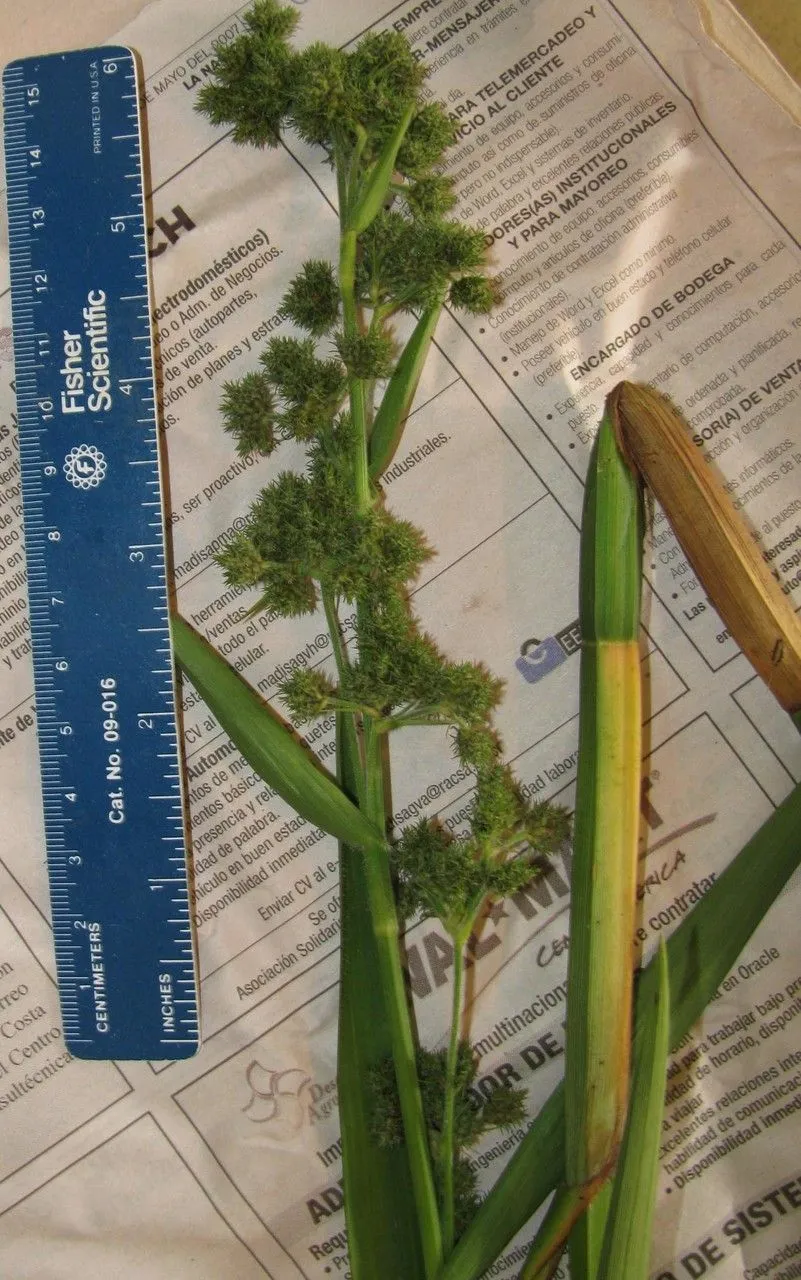
Author: Rottb.
Bibliography: Descr. Icon. Rar. Pl.: 70 (1773)
Year: 1773
Status: accepted
Rank: species
Genus: Fuirena
Vegetable: False
Observations: Tropics & Subtropics
Yefen, scientifically known as Fuirena umbellata, is a remarkable plant species belonging to the family Cyperaceae. This plant can be primarily found in tropical and subtropical regions, where it thrives in the warm climates. The diverse environments of these regions support its growth and proliferation, allowing Yefen to play a significant role in the local ecosystems.
The species Fuirena umbellata was first described and illustrated by Rottb. in the work “Descr. Icon. Rar. Pl.” published in 1773. Since then, it has captured the interest of botanists and plant enthusiasts due to its unique characteristics and adaptability to various climatic conditions.
Yefen typically grows in moist or wet areas, often seen around bodies of water or in damp ground, which is indicative of its preference for such habitats within the tropics and subtropics. This characteristic makes it an important species for maintaining the ecological balance in these areas, contributing to soil stability and water retention.
Understanding the ecological importance of Fuirena umbellata is essential for its conservation, as well as for maintaining the health of the habitats it dominates. Moreover, studying this plant can provide insight into the biodiversity and functionality of tropical and subtropical ecosystems, where each species interplays intricately to sustain the environment.
With its long-standing presence documented since the 18th century, Yefen continues to be of botanical interest, underscoring the importance of preserving the invaluable biodiversity found within our planet’s most climatically diverse regions.
Eng: yefen
En: Yefen
Taken Oct 14, 2014 by OTS – Oviedo-Brenes, Federico (cc-by-nc-sa)
Taken Oct 14, 2014 by OTS – Oviedo-Brenes, Federico (cc-by-nc-sa)
Taken Oct 14, 2014 by OTS – Oviedo-Brenes, Federico (cc-by-nc-sa)
© copyright of the Board of Trustees of the Royal Botanic Gardens, Kew.
© copyright of the Board of Trustees of the Royal Botanic Gardens, Kew.
© copyright of the Board of Trustees of the Royal Botanic Gardens, Kew.
Taken Oct 14, 2014 by OTS – Oviedo-Brenes, Federico (cc-by-nc-sa)
Growth habit>: Graminoid
Family: Myrtaceae Author: (F.Muell.) K.D.Hill & L.A.S.Johnson Bibliography: Telopea 6: 402 (1995) Year: 1995 Status:…
Family: Rubiaceae Author: Pierre ex A.Froehner Bibliography: Notizbl. Bot. Gart. Berlin-Dahlem 1: 237 (1897) Year:…
Family: Sapindaceae Author: Koidz. Bibliography: J. Coll. Sci. Imp. Univ. Tokyo 32(1): 38 (1911) Year:…
Family: Asteraceae Author: A.Gray Bibliography: Pacif. Railr. Rep.: 107 (1857) Year: 1857 Status: accepted Rank:…
Family: Fabaceae Author: Medik. Bibliography: Vorles. Churpfälz. Phys.-Ökon. Ges. 2: 398 (1787) Year: 1787 Status:…
Family: Aspleniaceae Author: (Cav.) Alston Bibliography: Bull. Misc. Inform. Kew 1932: 309 (1932) Year: 1932…